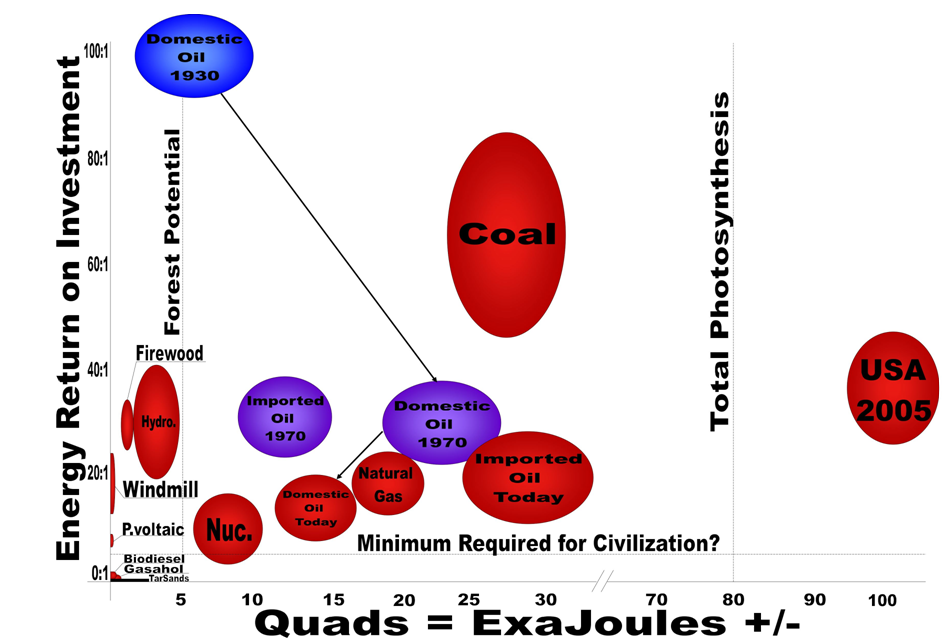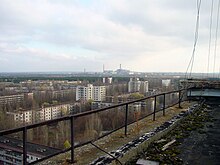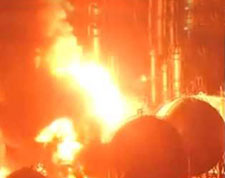This is a great blog post. I will only quote part of it because its point is that we must decentralized our energy sources to avoid losses. But I just want to focus on the losses part. Next week we start another meditation. Have a great Memorial Day weekend. (I realize you can not see the entire graphic below. More reason to go read the source.)
http://georgewashington2.blogspot.com/2011/04/us-wastes-more-energy-than-it-uses.html
Thursday, April 21, 2011
It’s Not Just Alternative Energy Versus Fossil Fuels or Nuclear – Energy Has to Become DECENTRALIZE
dot dot dot
This basic trend can be seen around the globe with many energy sources. We’ve most likely already found and tapped the biggest, most accessible and highest-E.R.O.I. oil and gas fields, just as we’ve already exploited the best rivers for hydropower. Now, as we’re extracting new oil and gas in more extreme environments – in deep water far offshore, for example – and as we’re turning to energy alternatives like nuclear power and converting tar sands to gasoline, we’re spending steadily more energy to get energy.
For example, the tar sands of Alberta, likely to be a prime energy source for the United States in the future, have an E.R.O.I. of around 4 to 1, because a huge amount of energy (mainly from natural gas) is needed to convert the sands’ raw bitumen into useable oil.
Professor Charles Hall of the SUNY College of Environmental Science and Forestry provides the following graphic to illustrate the point:
 “Balloon graph” representing quality (y graph) and quantity (x graph) of the United States economy for various fuels at various times. Arrows connect fuels from various times (i.e. domestic oil in 1930, 1970, 2005), and the size of the “balloon” represents part
“Balloon graph” representing quality (y graph) and quantity (x graph) of the United States economy for various fuels at various times. Arrows connect fuels from various times (i.e. domestic oil in 1930, 1970, 2005), and the size of the “balloon” represents partof the uncertainty associated with EROI estimates.
(Source: US EIA, Cutler Cleveland and C. Hall’s own EROI work in preparation)Click to Enlarge.
(click for larger image.)
The take away message from the graph is that the energy return on investment was very high for oil in 1930, but it is very low today, since the cheap, easy-to-get-to (and less dangerous) oil is gone.
:}
dot dot dot
America uses 39.97 quads of energy, while it wastes 54.64 quads (i.e. “rejected energy”).
As CNET noted in 2007:
Sixty-two percent of the energy consumed in America today is lost through transmission and general inefficiency. In other words, it doesn’t go toward running your car or keeping your lights on.
Put another way:
- We waste 650% more energy than all of our nuclear power plants produce
- We waste 280% more energy than we produce by coal
- We waste 150% more energy than we generate with other petroleum products
The Department of Energy notes:
Only about 15% of the energy from the fuel you put in your tank gets used to move your car down the road or run useful accessories, such as air conditioning. The rest of the energy is lost to engine and driveline inefficiencies and idling. Therefore, the potential to improve fuel efficiency with advanced technologies is enormous.
According to the DOE, California lost 6.8% of the total amount of electricity used in the state in 2008 through transmission line inefficiencies and losses.
The National Academies Press notes:
By the time energy is delivered to us in a usable form, it has typically undergone several conversions. Every time energy changes forms, some portion is “lost.” It doesn’t disappear, of course. In nature, energy is always conserved. That is, there is exactly as much of it around after something happens as there was before. But with each change, some amount of the original energy turns into forms we don’t want or can’t use, typically as so-called waste heat that is so diffuse it can’t be captured.
Reducing the amount lost – also known as increasing efficiency – is as important to our energy future as finding new sources because gigantic amounts of energy are lost every minute of every day in conversions. Electricity is a good example. By the time the energy content of electric power reaches the end user, it has taken many forms. Most commonly, the process begins when coal is burned in a power station. The chemical energy stored in the coal is liberated in combustion, generating heat that is used to produce steam. The steam turns a turbine, and that mechanical energy is used to turn a generator to produce the electricity.
:}
The main point being we waste energy to make energy. There is something wrong with that. It really means that resources are not free. But that is another post. More Tuesday.
:}











